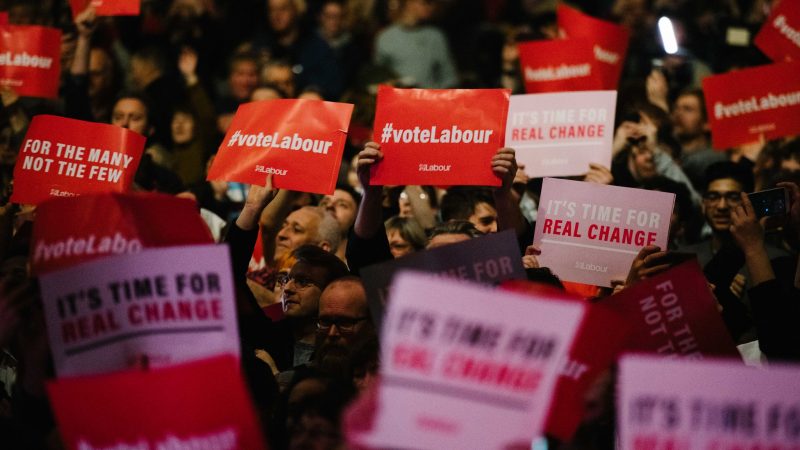
Labour did not have a good set of May 6th elections, though there were positive results, especially in Wales. Fierce discussion of the party’s performance continues. However, there is a history that is underlying the current problems, and sensible people will realise there are issues going back decades. If they are ignored any longer, Keir Starmer cannot succeed. The core issue – as Starmer said during the leadership campaign – is that the party has lost four elections, not one, and the faults do not lie only with Jeremy Corbyn and co, though Corbyn was very much the last blast of an old leftism.
The data-driven approach, which Starmer is said to favour, shows that the Project still championed by elements of the Old Right, with Peter Mandelson said to be a key advisor, failed 20 years ago – and this failure accelerated. Yes, New Labour won a landslide in 1997 with a record number of seats, but it began to lose seats and votes in the elections up to 2017. The core data is clear.
| Election | Seats | Vote share |
| 1997 | 418 | 43.2% |
| 2001 | 412 | 40.7% |
| 2005 | 355 | 35.2% |
| 2010 | 258 | 29.0% |
| 2015 | 232 | 30.4% |
| 2017 | 262 | 40.0% |
| 2019 | 202 | 32.1% |
While it has become a religious belief among New Labour supporters that they have a magic formula, it is clear that on key indicators of seats and vote share, New Labour dropped in the three elections after 1997. Ed Miliband was then unable to restore the party’s fortunes and Corbyn did better than either Gordon Brown or Miliband. Facts are facts.
While Blair did win in 2005, the result was the lowest vote share ever achieved by a Prime Minister who gained a parliamentary majority. Brown was then disastrous, and it is important to read the key texts that explain the Blair years and Brown’s failure. Two essential reads are Lewis Minkin’s The Blair Supremacy (2014) focusing on the Blair years, and Talking to a Brick Wall (2010) Deborah Mattinson’s account of working for New Labour as a pollster. This is an eye-opener, as it painfully describes how the New Labour elite refused to accept they had lost support, sliding to defeat in 2010.
The tragic decline of the Labour Party over the last 20 years is not due just to Blair and Brown. A third key text explaining why Labour lost Scotland is Gerry Hassan and Eric Shaw’s The Strange Death of Labour in Scotland, which they published in 2012 during Ed Miliband’s period as leader. The reaction of the Labour hierarchy to the meticulous examination of the problems of the party north of the border was at best the boast that Labour had 41 Scottish MPs. Until the 2015 general election that is, when it went down to one – as is the case today.
These texts all relate to the period before Corbyn’s leadership and explain some of the reasons for Labour’s crises. Post-Hartlepool, it has become clear that the Blair right does not accept the New Labour Project failed, blaming all on the final five years of a 20-year decline when Corbyn was leader. This is a factional, not a historical, perspective. The core problem with New Labour, which underpins the disasters up to and including Hartlepool, was the strategy of taking the working-class voter for granted and targeting the Tory voter.
Using a policy review based on triangulation, New Labour watered down Labour policy to win short-lived Tory gains that were slipping away by 2010. The focus on the Red Wall seats is Starmer’s attempt to reverse this policy, but by using the same flawed approach. He seems to assume that the Tory voters to be won equate to working-class Brexiteers, and the Labour voter to be ignored is metropolitan and progressive. Labour needs a progressive coalition, taking in both sectors, as a Blue Labour strategy will simply drive away the metropolitan voter with no guarantees of winning the Tory working-class voter.
Labour cannot get out of the tailspin it is now locked into without abandoning the centralised projects of the last 20 years, some of which were Corbynite. But Corbyn is not in charge of the present disasters, and while a shadow cabinet reshuffle may or may not be useful – will it promote debate? – the immediate problems lie in the leadership back room. The excuse that the May 6th elections “came too soon” for Labour is fatuous. Labour had less time in 2017 to plan, and did a great deal better.
The last year has maintained Labour’s long-term failure to have a core identity that ordinary people can relate to and has bizarrely seen the Tories establish themselves as the party of a fake localism. The problems of Starmer’s first year rest with assumptions that progress does not mean challenging Tory policies, a tendency that began with the shadow communications agency of the later 1980s. It is bizarre to hear from old New Labour politicians who will not face up to reality. Their day is done. The data show clearly that the decline in support started 20 years ago.




More from LabourList
‘Britain must keep its foot on the EV accelerator’
Explained: How could Unison disaffiliate from Labour?
‘Andrea Egan’s Unison win will reshape Labour’s internal politics – we just don’t yet know how’